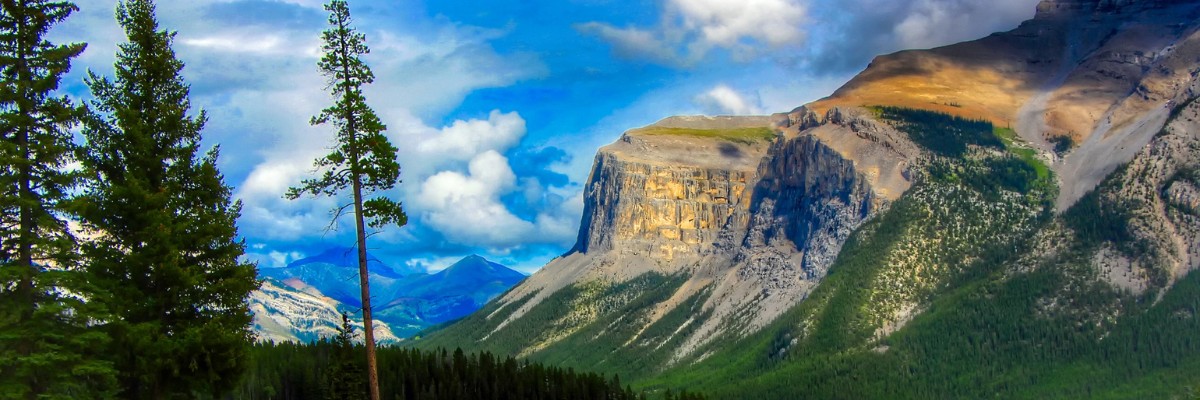Canada, with its vast and diverse landscapes, boasts an incredible array of natural wonders, protected and preserved within its extensive network of national parks. These protected areas serve as a testament to the country’s commitment to conservation and offer visitors an unparalleled opportunity to connect with nature. From towering mountains and pristine forests to crystal-clear lakes and awe-inspiring wildlife, Canada’s national parks present a treasure trove of unforgettable experiences. In this article, we delve into the wonders of some of Canada’s most iconic national parks, celebrating their beauty and significance in safeguarding the nation’s natural heritage.
1. Banff National Park: Where Majesty Meets Serenity
Nestled amid the breathtaking Canadian Rockies, Banff National Park is a crown jewel among the country’s national parks. Established in 1885, it is not only Canada’s first national park but also one of the world’s most visited. Home to soaring peaks, turquoise glacial lakes, and lush alpine meadows, Banff exudes a magnetic allure for hikers, nature enthusiasts, and photographers alike.
The turquoise-hued Lake Louise is a sight to behold, reflecting the surrounding mountains like a pristine mirror. The Icefields Parkway, a scenic drive connecting Banff and Jasper National Parks, is a breathtaking journey through glaciers, waterfalls, and wildlife.
2. Jasper National Park: An Untamed Wilderness
Adjacent to Banff, Jasper National Park is a vast wilderness area that exudes raw, untamed beauty. Carved by ancient glaciers and punctuated by massive icefields, it offers a true escape into the heart of the Rockies. Athabasca Falls, a stunning cascade of water, captivates visitors with its power and grandeur.
One of the main attractions in Jasper is the Columbia Icefield, where visitors can walk on the ancient ice or take a guided tour to learn about the region’s geological history. Additionally, the park is a sanctuary for wildlife, providing a haven for creatures such as elk, moose, and bighorn sheep.
3. Pacific Rim National Park Reserve: Where Land Meets Sea
On the western edge of Vancouver Island, the Pacific Rim National Park Reserve showcases the confluence of temperate rainforests, rugged coastlines, and vast ocean expanses. The park is divided into three units: Long Beach, the Broken Group Islands, and the West Coast Trail.
Long Beach boasts miles of sandy shoreline, perfect for beachcombing and surfing, while the Broken Group Islands are a kayaker’s paradise, with countless islets to explore. For the adventurous hiker, the West Coast Trail offers a challenging trek along the coastline, revealing stunning vistas and the chance to witness abundant marine and terrestrial wildlife.
4. Gros Morne National Park: A Geological Wonder
Designated as a UNESCO World Heritage Site, Gros Morne National Park, located in Newfoundland and Labrador, is a geological masterpiece. The park’s striking landscape includes fjords, glacial valleys, and towering cliffs that tell the story of Earth’s geological history.
Gros Morne’s unique geology earned it the nickname “Geologists’ Mecca.” The Tablelands, a rare and barren area with exposed mantle rock, provide a glimpse into the Earth’s mantle layer usually hidden beneath the crust. The park’s hiking trails lead visitors through ancient landscapes, offering an opportunity to learn about the forces that shaped our planet.
5. Yoho National Park: Nature’s Art Gallery
Nestled in the heart of the Canadian Rockies, Yoho National Park is a living gallery of stunning natural wonders. The park’s name is derived from a Cree expression of awe and wonder, fitting for a place so rich in breathtaking sights.
The famous Natural Bridge, a rock formation carved by the flow of the Kicking Horse River, is a testament to the power of nature’s forces. Takakkaw Falls, one of Canada’s highest waterfalls, tumbles dramatically from a mountainous cliff. For a truly enchanting experience, visit the Burgess Shale, a UNESCO World Heritage Site, where you can encounter the ancient fossils of some of the planet’s earliest complex life forms.
6. Waterton Lakes National Park: Where Peaks and Prairies Converge
Sharing its border with Montana’s Glacier National Park, Waterton Lakes National Park combines majestic mountain scenery with vast prairies. The park’s diverse ecosystems provide a haven for a wide variety of wildlife, including bears, eagles, and bison.
The highlight of Waterton Lakes is the iconic Prince of Wales Hotel, perched on a bluff overlooking the stunning Upper Waterton Lake. The hiking trails in the area cater to all levels of experience, and the Crypt Lake Trail is particularly renowned for its challenging yet rewarding journey.
7. Fundy National Park: Tides and Trails
Located along the Bay of Fundy, home to the highest tides in the world, Fundy National Park offers a unique coastal experience. Twice a day, the tides dramatically shift the landscape, creating an ever-changing intertidal zone filled with fascinating marine life.
The park’s Acadian forest, a mix of maple, birch, and evergreens, is crisscrossed with an extensive network of hiking trails, providing ample opportunities to explore its natural beauty. The Fundy Footpath, a challenging coastal trail, offers hikers a chance to witness the tidal phenomena up close.
Preservation for Future Generations
Canada’s national parks are not only an invitation to adventure but also a reminder of the nation’s responsibility to protect and preserve its natural heritage for future generations. The wonders within these protected areas serve as a living testament to the importance of conservation and environmental stewardship. As visitors continue to explore and appreciate the majesty of these national parks, may they also embrace the duty to safeguard these pristine landscapes and the extraordinary biodiversity they harbor. For within these breathtaking expanses lie the hope and promise of a sustainable future for our planet and all its inhabitants.




